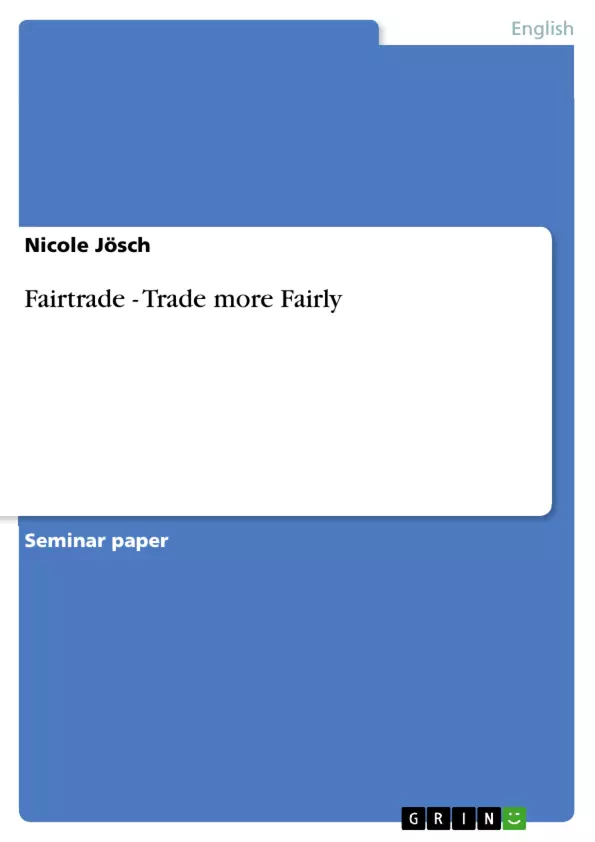Some of us have already heard about ethical consumption. When we speak about ethical consumption or ethical behaviour on the one hand, it implies unethical behaviour on the other. Although, in this report, we will not go deeper into the matter of unethical consumption, we will now look at how can we do trade more fairly. Fairtrade is a trading partnership which endeavours respect, dialogue, transparency, and increased more fairness in international trade1. Nevertheless, Fairtrade is becoming more and more popular in the industrialized world. This movement is engaged in debates with political decision-makers in the European institutions for the purpose of making international trade fairer.
Inhaltsverzeichnis (Table of Contents)
- Introduction
- History and Definition of Fairtrade
- History of Fairtrade
- What is Fairtrade?
- Central Values
- Worldwide Involvement
- Differences between Bio and Fair
- Labelling
- The Fairtrade Mark TransFair
- Criteria of Certification
- Producers
- Products
- Food and Non-food Products
- Bestsellers
- New Product Range
- Sales Channels
- International Fairtrade Organisation (IFAT)
- Importers of Fairtrade
- Retailers in Germany
- Sales Figures of Fairtrade in Germany
- Marketing Image Campaigns
- Drawback of Fairtrade
- Future Outlook
Zielsetzung und Themenschwerpunkte (Objectives and Key Themes)
This term paper aims to provide a comprehensive overview of Fairtrade, exploring its history, definition, core values, labelling standards, producer relationships, product range, sales channels, and marketing strategies. It also examines the challenges and future prospects of Fairtrade in the context of international trade.
- The historical development and evolution of Fairtrade.
- The central principles and values underpinning Fairtrade practices.
- The diverse product range and sales channels associated with Fairtrade.
- The impact and influence of Fairtrade on international trade.
- The challenges and opportunities for Fairtrade in the future.
Zusammenfassung der Kapitel (Chapter Summaries)
The introductory chapter sets the stage by introducing the concept of ethical consumption and outlining the significance of Fairtrade in promoting fairer trade practices. The second chapter delves into the history of Fairtrade, tracing its origins from Alternative Trading Organisations (ATOs) to the establishment of the first Fairtrade organisations in Europe. It highlights the importance of direct trade relationships between producers and consumers and the role of Fairtrade in empowering producers, particularly women.
The subsequent chapters examine the definition of Fairtrade, outlining its central values such as fair prices, sustainable production, and community development. The importance of labelling and certification for Fairtrade products is discussed, highlighting the role of the TransFair mark. Chapter 4 focuses on the relationship between Fairtrade and producers, emphasizing the empowerment and economic benefits for producers in developing countries.
Chapter 5 provides an overview of the diverse range of Fairtrade products, encompassing both food and non-food items. The chapter delves into popular Fairtrade products and explores the introduction of new product ranges. The subsequent chapter examines the sales channels of Fairtrade, highlighting the roles of the International Fairtrade Organisation (IFAT), importers, retailers, and the growing sales figures in Germany.
Schlüsselwörter (Keywords)
The primary focus of this term paper lies in the exploration of Fairtrade, its history, core values, and impact on international trade. Key terms include Fairtrade, ethical consumption, alternative trade, direct trade, producers, consumers, labelling, certification, TransFair, sustainable production, community development, product range, sales channels, and marketing strategies.
- Quote paper
- Nicole Jösch (Author), 2006, Fairtrade - Trade more Fairly , Munich, GRIN Verlag, https://www.grin.com/document/59848



